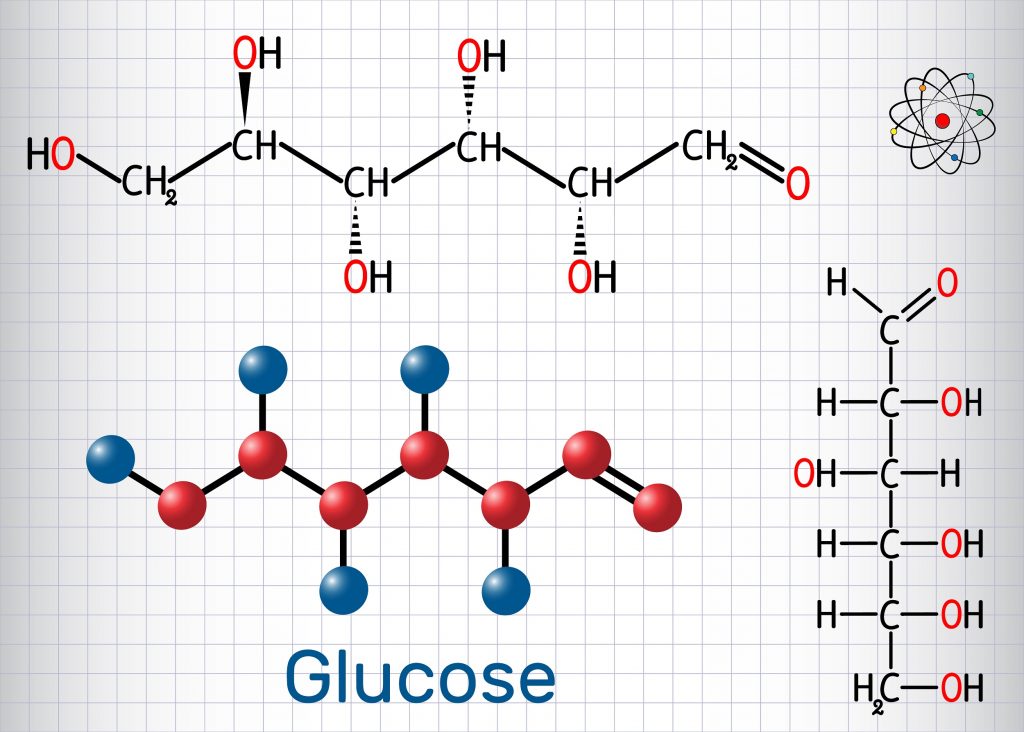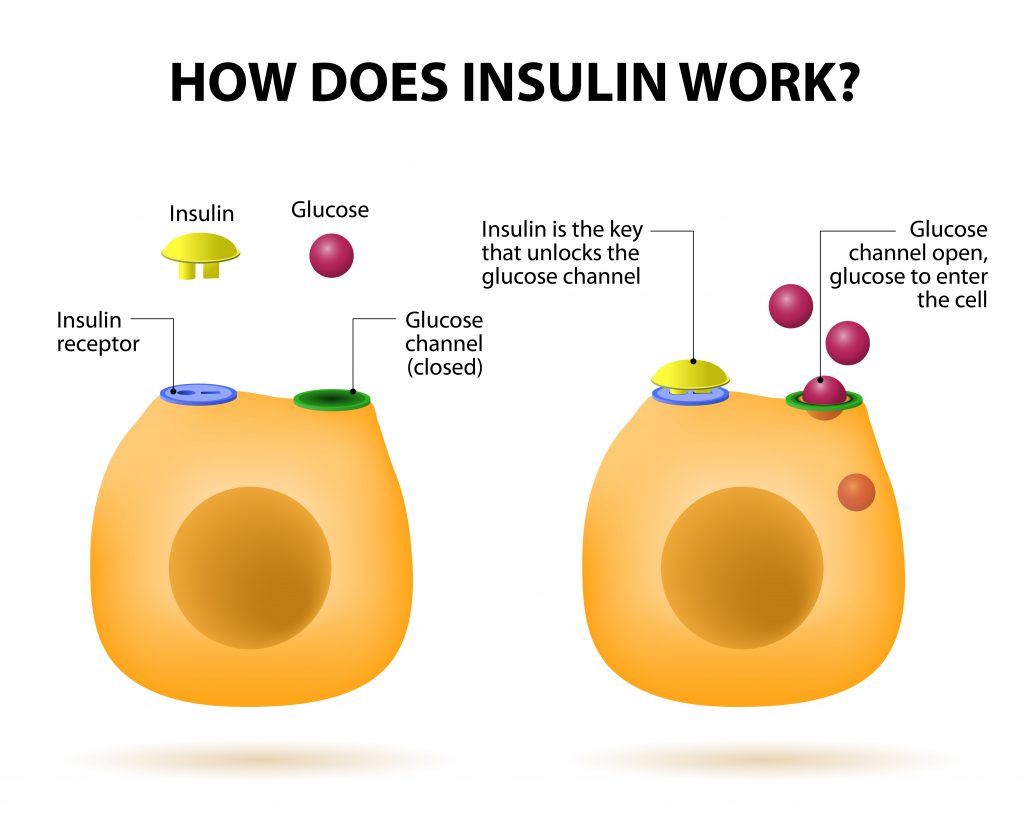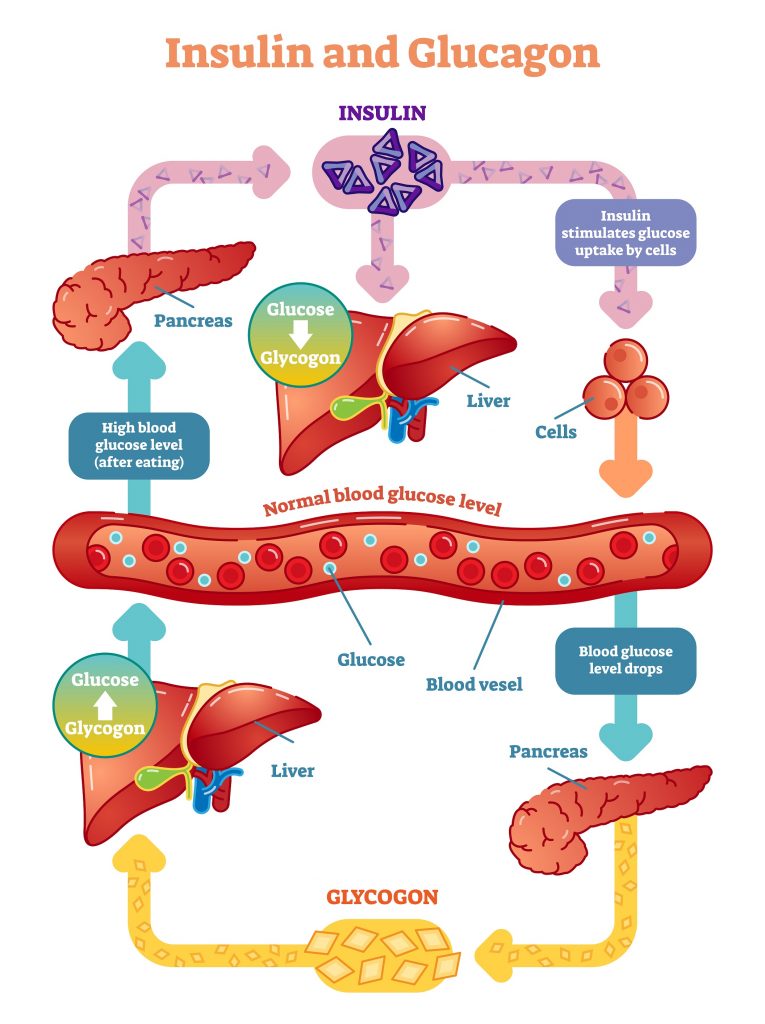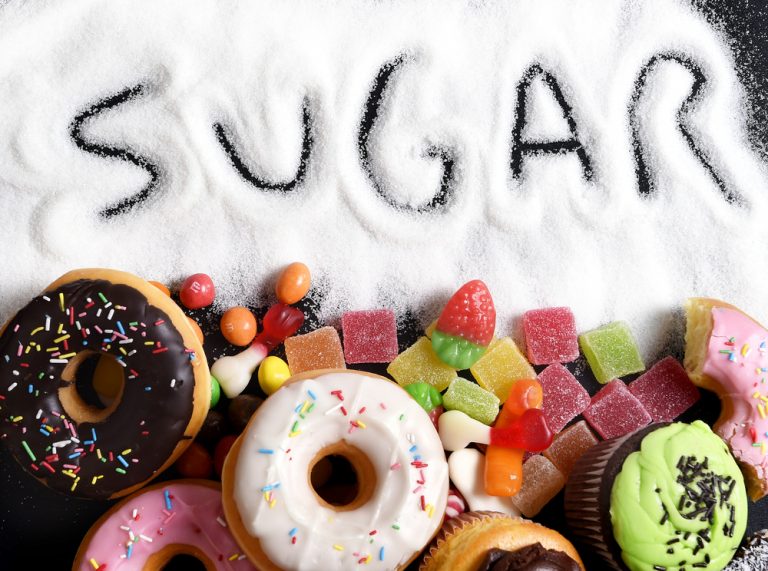Glucose is the most common monosaccharide in nature. The most important role of glucose is to provide an energy source for the human cells. It is a real biological fuel for the body, especially the brain and nervous system. What other functions does glucose have? What are its main sources?
What is glucose?
Glucose, or dextrose, is a compound belonging to simple sugars (monosaccharides), specifically hexoses. Glucose is a white crystalline powder with a sweet taste. It dissolves very well in water but does not change its pH.
Glucose - a role in the body
Glucose is primarily used as a biological fuel for energy production during aerobic cellular respiration. In the first stage, glucose is transformed into two pyruvate molecules in the course of biochemical reactions. Subsequently, pyruvate is incorporated into the citric acid cycle and respiratory chain resulting in the formation of adenosine-5-triphosphate (ATP).

ATP is a type of “cellular battery” that is constantly charged, and the energy stored in it is necessary for nearly every process that occurs in our organism.
The largest part of the glucose intake is consumed by the brain while at the same time being the most sensitive organ to its deficiency. An adult’s brain uses about 120 grams of glucose a day.
Glucose has the ability to combine with itself or with other monosaccharides, e.g. fructose, to form di- or polysaccharides. Two linked glucose molecules form maltose, and the combination of glucose and fructose results in sucrose.
When excess glucose appears in the body, it can be stored as spare energy material. Then glucose, forming long branched chains, forms starch (in plants) or glycogen (in animals).
Also, in plants glucose chains can form cellulose, which is a building component of plant cells walls. Cellulose, forming rigid and long chains, arranged in the parallel regime, forms part of hard plant fragments, e.g. wood.
In addition to being an energy source for cells, glucose is also a source of organic carbon. Hence, it is used as a precursor for the synthesis of many biochemical molecules, e.g. vitamin C and amino acids.
Also, glucose is necessary for the glycosylation process, i.e. the process of attaching single sugar compounds to other molecules. Then, glycoproteins, glycolipids, peptidoglycans and nucleosides are formed.
Glucose - sources
Glucose is the most common monosaccharide in nature. Plants have the ability to produce glucose from carbon dioxide, water and solar energy through photosynthesis process. This is possible thanks to specialized biochemical pathways that are found in chloroplasts. Animal cells do not have such possibilities.
Glucose found in the human body comes primarily from plant food sources. Glucose is found in large quantities in fruits such as figs, bananas, apples, grapes, plums, cherries and vegetables such as onions, peppers, sweetcorn and honey. Dried fruits are particularly rich in glucose.
The source of glucose is also white sugar, which is used to sweeten coffee, tea and baking cakes. In the food industry, glucose syrup or glucose-fructose syrup is commonly used. We find it in carbonated drinks, cakes, pastries, jams and cereals.
Glucose is also found in starchy foods, such as potatoes, pasta, cereals, rice and corn.
In the body, starch breaks down to glucose with the help of special enzymes. Excess glucose is stored in the liver and muscles as glycogen. On the other hand, if our body recognizes too little amount of it in our circulation it can be synthesized from other molecules, such as proteins, in a process called gluconeogenesis.
Both processes allow you to maintain a constant blood glucose level between meals or during fasting.
We should remember, however, that although glucose is an essential biological fuel that maintains basic life processes, its excess supplied with food causes health problems, such as obesity, diabetes, cardiovascular diseases and cancer.
Glucose - hormonal regulation
To maintain normal vital functions, the blood glucose level of animals must be constantly maintained at an appropriate level by hormonal mechanisms. The pancreas plays a central role in regulating glucose levels. Endocrine cells that are clustered in the pancreas in so-called the Islets of Langerhans secrete two hormones - insulin and glucagon.

Insulin is produced by the beta cells of the Langerhans islets, and its secretion is stimulated by an increase in blood glucose after a meal. Insulin is responsible for among others the transport of glucose to tissues using specialized transporters (GLUT) and reduction of blood glucose levels.
Excess glucose is stored as glycogen or converted to fatty acids and glycerol, which are stored in adipose tissue.
The hormone that works in contrast to insulin is glucagon and it is produced by the alpha cells of the Langerhans islands. Glucagon is secreted when the blood glucose level is too low. It causes, among others breakdown of glycogen in the liver and release of glucose into the blood.
Thanks to this, it maintains a constant glucose level between meals. A supply of glycogen in the liver is enough to maintain normal glucose levels for several hours. After running out of glycogen stores, gluconeogenesis and glucose production from amino acids or glycerol is started.

Glucose - Maillard reaction
The Maillard reaction is a nonenzymatic process that occurs between amino acids and simple sugars such as glucose. The reaction occurs during food processing under the influence of high temperature, giving it a dark colour and extra aroma and taste, e.g. frying onions, browning bread, roasting coffee beans.
The Maillard reaction can also occur in the body. This happens under the influence of eating products with a high content of simple sugars, e.g. sweets. After entering the bloodstream, glucose begins to react with body proteins, e.g. haemoglobin, in erythrocytes, forming glycated haemoglobin.
Glycated haemoglobin is a laboratory marker assessing the average blood glucose concentration in the last 3 months. It is used, among others for monitoring diabetes therapy.
In addition to haemoglobin, other proteins in the body are damaged. The most dangerous are damage to proteins that do not regenerate, such as myelin sheaths in neurons or the lens in the eye. Thus, Maillard reactions in even tissues are responsible for diabetes complications such as nerve damage and cataracts.
Glucose - application
Glucose is industrially produced from starch (obtained from corn, rice, wheat, rye or potatoes) by enzymatic hydrolysis using amylase or acids. Then the glucose is made from glucose, which is used, among others in the production of confectionery such as sweets, toffee and confectionery pomades.






